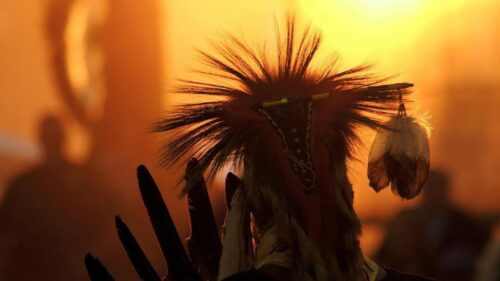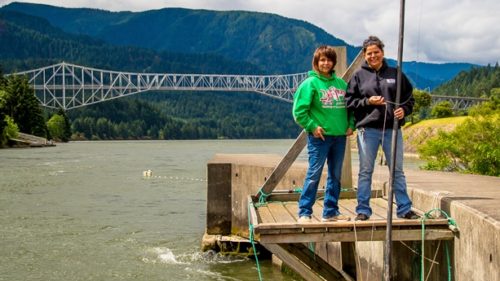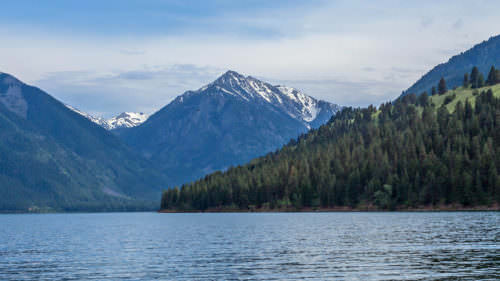I used to dream about strawberries. Probably other berries as well, but as a kid, strawberries were the end-all, be-all of the berry world. When asked what design I would like sewn on my first traditional shawl, I responded with an immediate “Strawberry!” as I could think of nothing more beautiful. Perfectly shaped and painted a deep, rich red. They are the rubies of the fruit world. I dreamt of someday finding my own strawberry patch and filling my pockets flush.
All those forgotten hopes of berry wealth, long tucked away as a childhood memory, started to stir again when I moved to Oregon, a state with a world-renowned berry industry, a state that is basically an overflowing food pantry. Endless shrubbery adorned with colorful edibles, rich soils hugging delectable roots and glittering rivers stocked with natant treasures — Oregon is in a constant state of deliciousness.
It almost feels like fate. As an Indigenous person deeply invested in advocating for equal access to resources for Indigenous and rural communities, I know that food supply plays a key factor in determining a community’s health. I’ve lived in some of the biggest food deserts in America, including the Navajo Nation — which, for reference, is geographically larger than 10 of the 50 states in America yet is populated by only 13 grocery stores. In places like this, supply, access and cost become food for thought in a much deeper sense.
Food sovereignty — a people’s right to shape food policy rather than it being formed by outside market forces — is an ongoing movement within numerous Indigenous communities. Many of the 9 federally recognized tribes in Oregon are already involved in a myriad of ways, including investing in traditional agriculture methods, retaining sustainable hunting and fishing rights, and the mindful manufacture of products from traditional ingredients, also called “first foods” in Native communities.
These first foods — such as fish, game, roots and berries — have nourished local people since pre-contact with Europeans and continue to serve important roles within the community. Here is your guide to Indigenous first foods in Oregon and ways you can experience, understand and even taste them for yourself.
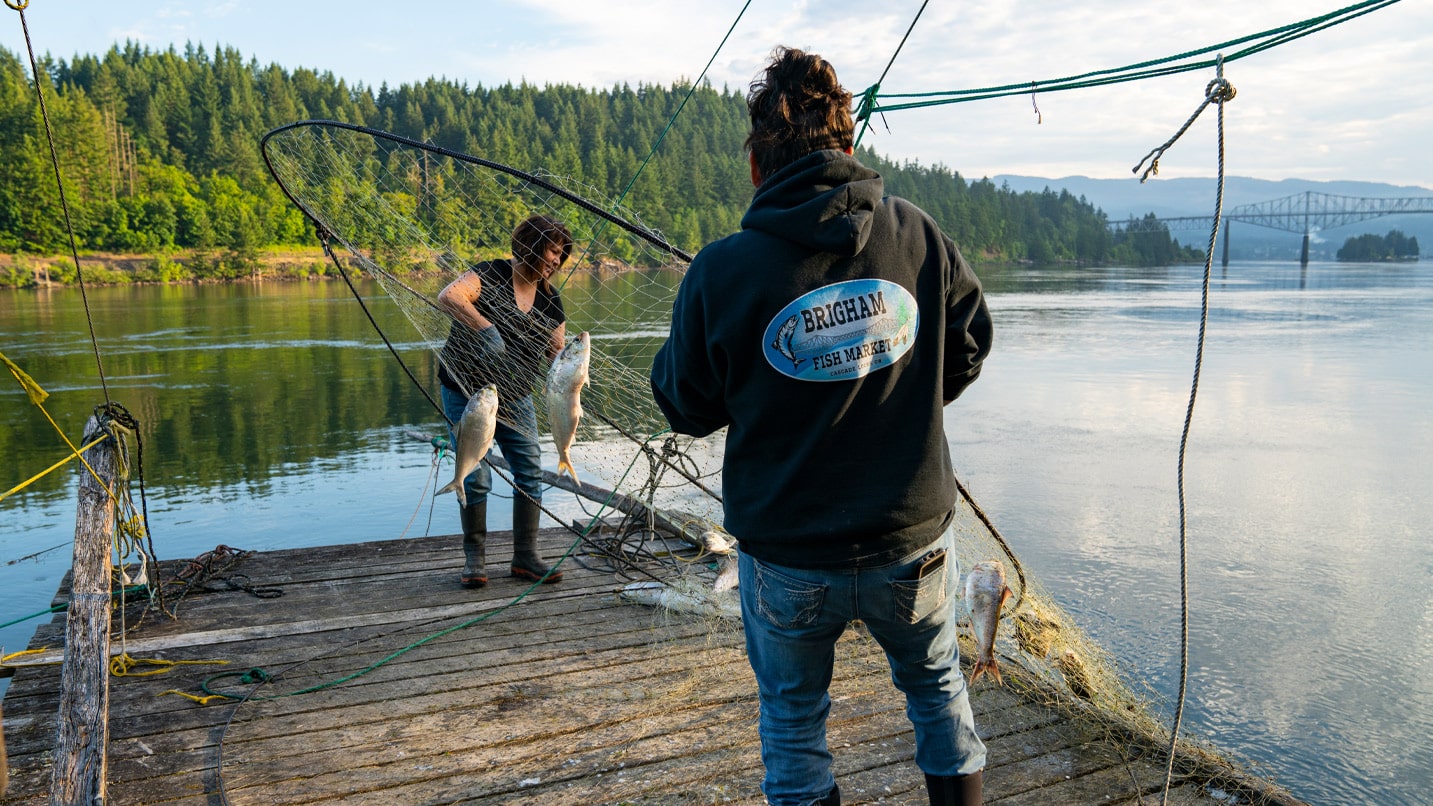
Salmon
Salmon is not only considered a first food for Indigenous people, it is truly one of the first foods in terms of seasonal arrival, appearing in early spring and later again in the fall. Tribal stories of the Columbia River Gorge include the oft-told tidbit that during the salmon runs at Celilo Falls before The Dalles Dam was built in 1957, the water was so populated with fish you could cross streams by walking upon their backs. Wooden scaffolds or platforms were set up next to the river, suspended by the rocks around them. Fishermen would stand atop these, using nets or spears to gather fish. Families would catch these salmon in preparation for the year ahead, traditionally drying the meat on long racks.
Traditional salmon feasts — like the one hosted each spring by Celilo Village along the Columbia River — are annual ceremonies marking the beginning of the fishing season with a harvest paying tribute to the salmon and to the water. It’s located near the site of Celilo Falls, once the hottest trading hub of the Pacific Northwest and dubbed the “Wall Street of Indian Country” before The Dalles Dam was built. It is still a sacred place for Columbia River Basin Tribes, which include the Umatilla, Yakama, Warm Springs and Nez Perce.
While the amount of salmon in the rivers has dramatically dropped over the years, the Columbia River is still host to traditional fishing sites, some still utilizing wooden platforms and dip nets. If you come across a fishing platform, it’s OK to marvel from a distance, but under no circumstances should you attempt to bother one, both out of respect and safety.
Try This: Stop into the Native American-owned Brigham Fish Market or any of the Native-owned fish stands in Cascade Locks for an assortment of fresh-caught salmon, as well as hot items like chowder, sandwiches and fresh chinook fish ’n chips (available seasonally, mid-June through September). The Brigham sisters are members of the Confederated Tribes of the Umatilla Indian Reservation, and are part of a long tradition of family fishing in the ancient way — glimpse the historic photos adorning the walls inside the restaurant. Take your food to go or dine at a picnic table overlooking the Columbia River. You can also buy premium Columbia River chinook, coho, steelhead, and sockeye directly from Native fishers in late spring, summer and fall. On the Southern Oregon Coast, the Coquille tribe typically holds its Mill-Luck Salmon Celebration in September.
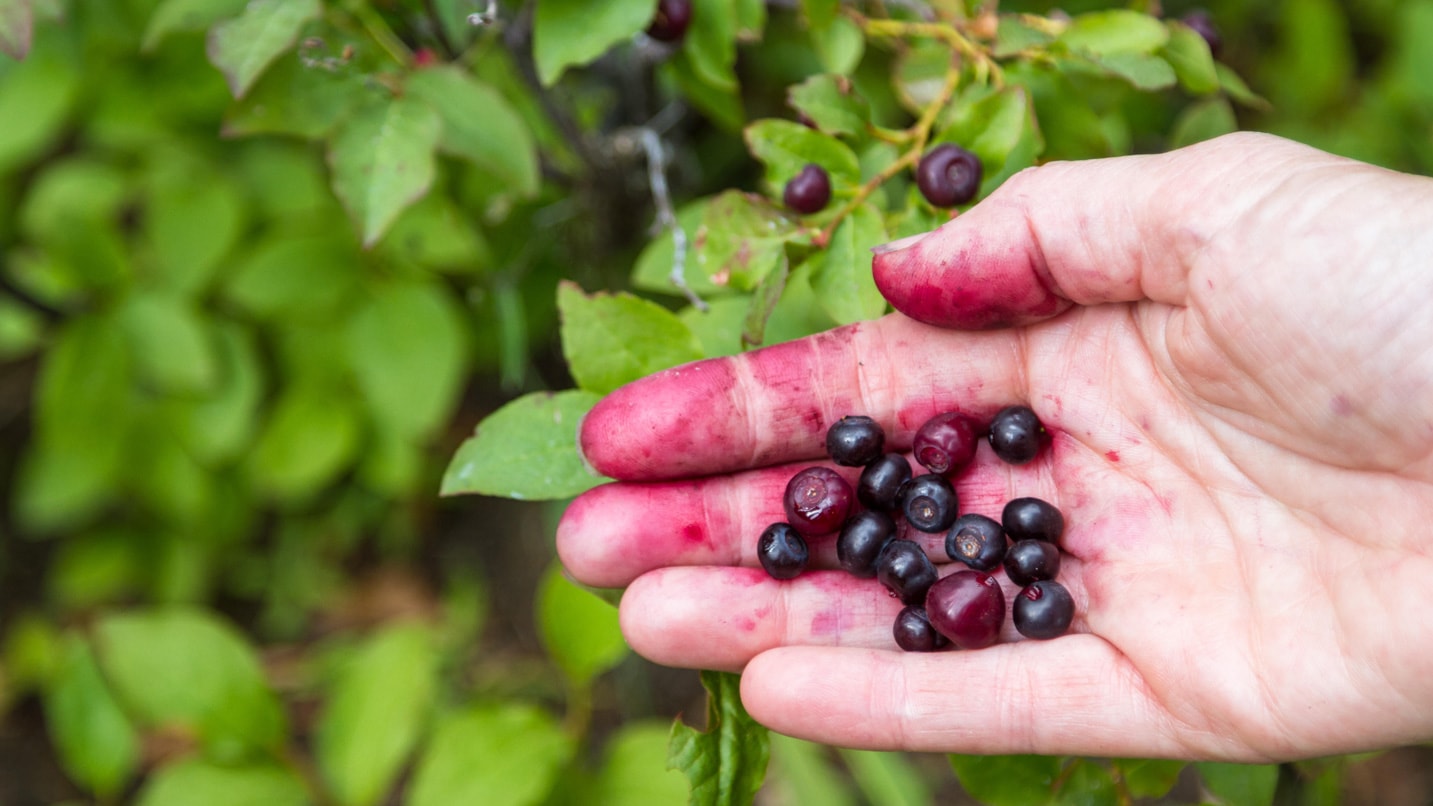
Berries
From huckleberries and chokecherries to its leading production of blackberries, raspberries, marionberries and boysenberries, Oregon is awash with small fruits. For the Confederated Tribes of the Umatilla Indian Reservation, huckleberries in particular are celebrated as a first food. Every summer as the huckleberries ripen, the Tribes host a huckleberry feast for their members.
The Oregon huckleberry, small and red, is often found around dry, cool areas, with the picking season peaking in late summer — though, given how appetizing they are, it can be a bit of a challenge to find an unpicked bush. If you are fortunate enough to come across a bush, please treat it with care. Use a delicate hand to pick the berries individually in an effort to ensure reproduction for the next year. Understand that these traditions have been around for generations upon generations. In fact, so delicate are the bushes and so important is sustainability that some tribes created fine combs from salmon backbones to harvest the berries. These tiny fruits were often sun-dried or smoked before being mashed into cakes and wrapped with leaves for future use.
Try This: You can find these berries in a vast variety of Oregon-made products, from candies to lotions to jams. Portland’s only Native-owned coffee shop, Bison Coffeehouse, serves a revolving variety of homemade berry-baked goods, including marionberry cake and blueberry bars. Berries have even found their way into the coffee itself in the form of a huckleberry mocha latte. Perhaps not as traditional as a leaf-wrapped cake but just as tasty.
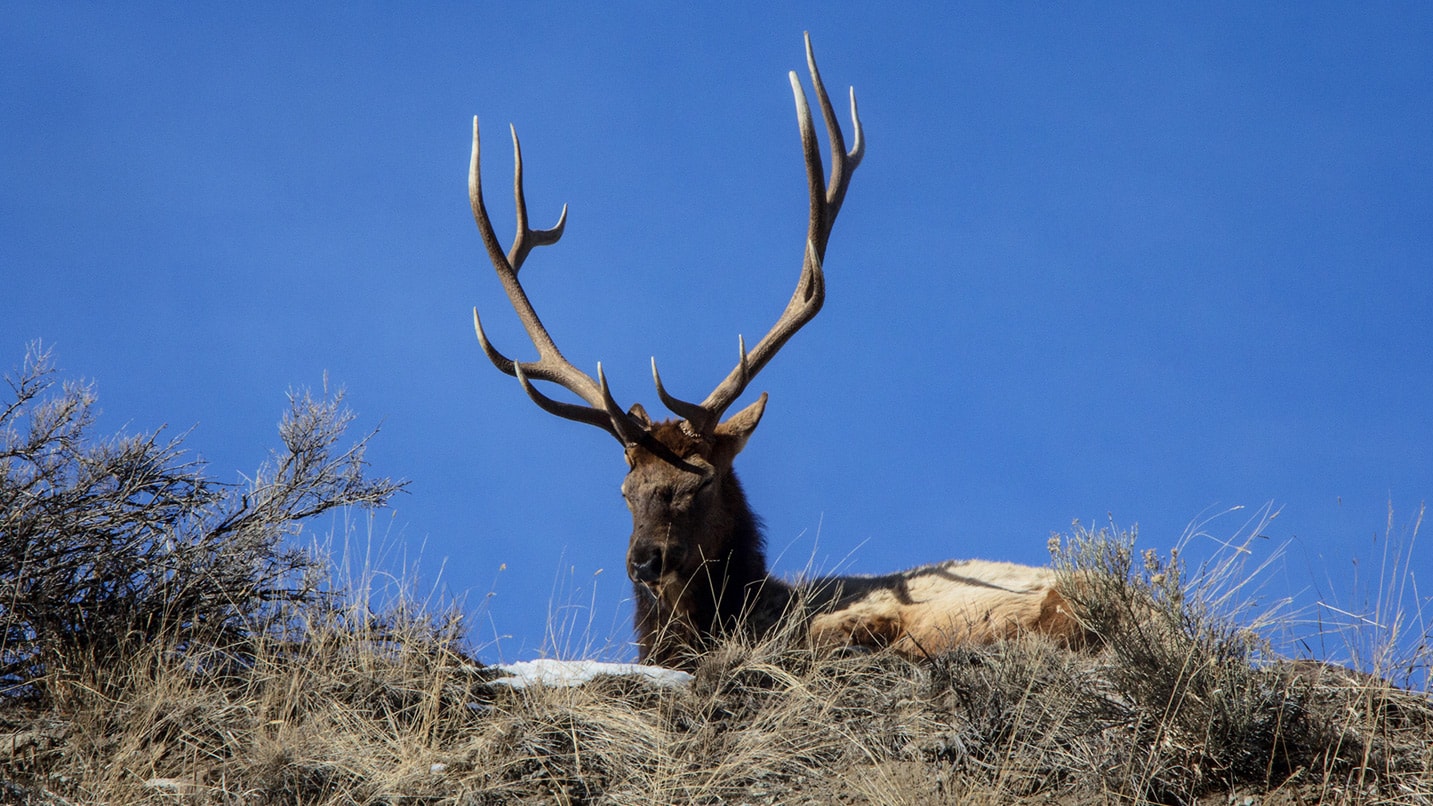
Game
With an abundance of game in Oregon, hunting has long been a practice for local tribes. Traditionally, roasted, steamed and boiled meats are often consumed during summer and fall. Smoked or dried meats, such as jerkies and pemmican — a mixture of dried meats or fish, fats and berries — are prepped and stored for winter and spring, when fresh food is not as readily available.
Game provides more than sustenance; it serves tradition and ceremony, too. Berries and roots, gathered seasons before, are often prepared to be used with game meat, whether mixed in with dried meats or boiled together for flavorful stews. Tribal members often adorn regalia with details crafted from the animal. More than just leather hides, an animal’s antlers, hooves, bones and teeth are important as well, serving as knives, tools, insignia or even as gaming dice.
Because of how integral hunting is to the community, tribes will often have separate agreements and treaties with the government that allow tribal members to hunt on federal lands, outside of the official state seasons.
Try This: Deer and elk are the most abundant large game in Oregon, with Rocky Mountain elk roaming Eastern Oregon and Roosevelt elk dwelling west of the Cascade mountains. Hunters may visit the Oregon Department of Fish & Wildlife page for the latest information. For non-hunters hoping to glimpse some of this wildlife, there are a variety of public places to visit. From Dean Creek Elk Viewing Area along the Southern Oregon Coast to Elkhorn Wildlife Area in Eastern Oregon, you may just be able to see Oregon’s largest cervids for yourself. Pick up smoked elk at Salmon King Fisheries, a Native-owned, Warm Springs-based company that not only harvests but processes their own salmon and meats, selling various iterations including smoked and wind-dried.
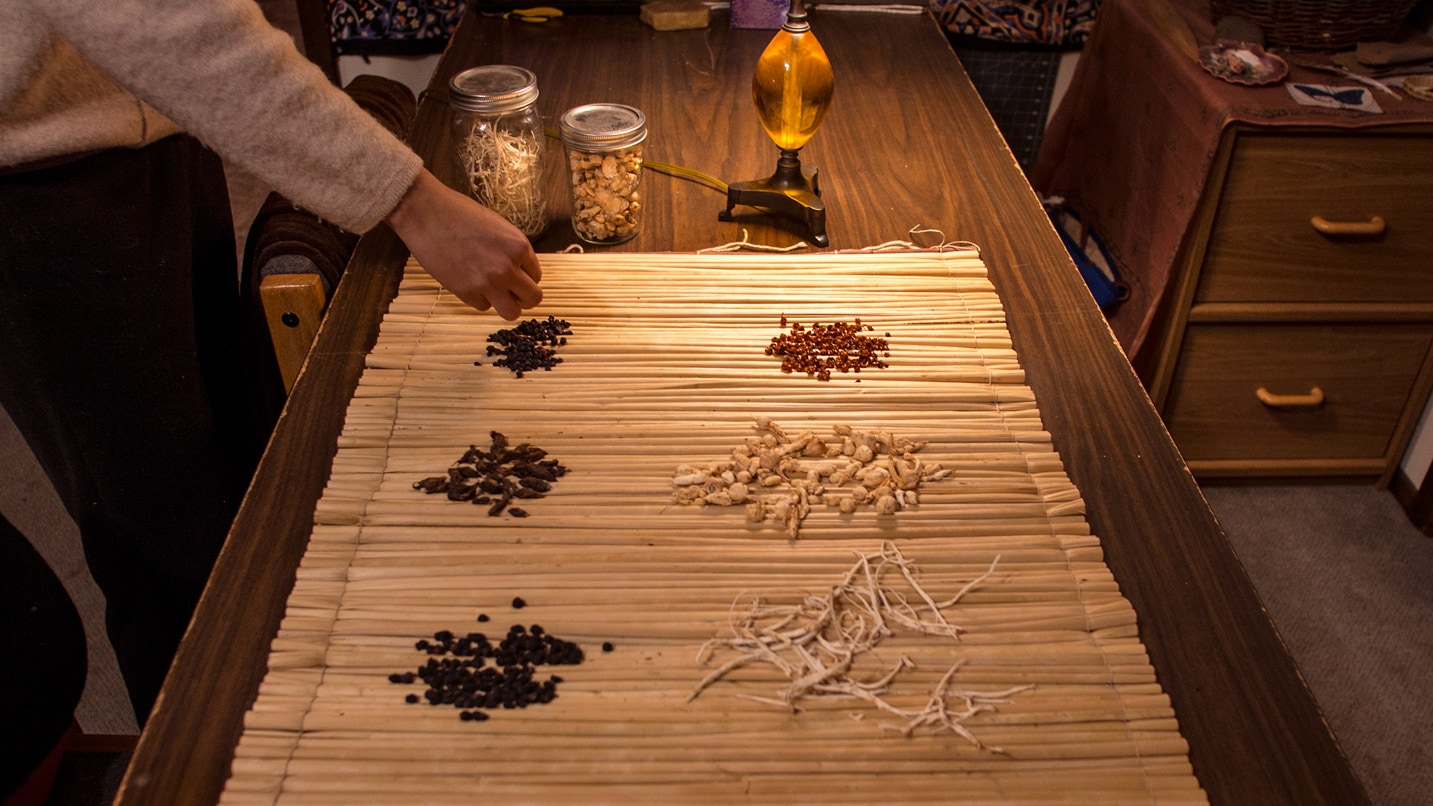
Roots
Roots, with their multi-use properties and ability to store well, play a key role in traditional diets and medicine. After fishing season, Natives often begin root gathering. Horsetail, more recently considered to be somewhat of a nuisance in urban Oregon backyards, holds treasure beneath the ground. Traditionally, the roots were cooked and eaten in seal oil, or utilized in basketry. Biscuitroot, found in Eastern Oregon, would be gathered, mashed, then shaped into biscuits and dried by the sun. Bitterroot, devil’s club (whose roots were used for soothing rheumatism) and western cedar are just some of the traditional (and often still used) roots found in Oregon.
Camas is one of the more important roots in terms of trade and nutrition. The bulbs, slowly cooked in pits, would be dried and baked to be stored away for later use or trade, as medicine or sweeteners. The stalks were used for mattresses. While not nearly as abundant nowadays, camas bulbs are still gathered and eaten. Those new to gathering the plant should be aware of the Death camas, which are easily confused with the standard variety and are, perhaps unsurprisingly given the name, toxic. Oregon is quite literally rooted with appetizing morsels, some satisfying but also a few potentially harmful, so it is in your best interest to forage with an experienced guide or practiced botanical and taxonomical knowledge.
Try This: The significance of roots, as well as their edible functions, is part of the cultural backbone for many tribes, with knowledge holders often passing traditional plant expertise to each other through oral histories, storytelling and participatory events. Each year the Umatilla Tribe hosts a feast appropriately called Root Feast, in which Tribal members celebrate the culture, the knowledge and, of course, their roots.
